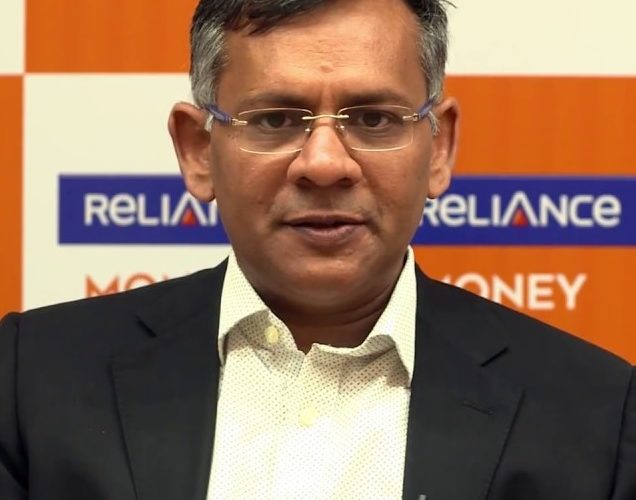
Devang Mody
Executive Director and CEO, Reliance Money
Technology has been playing a significant role in spurring growth and innovation in India’s financial services sector. The new-age concepts of FinTech, e-KYC, cashless transactions, digital payments etc. are all outcomes of digital disruptions in this space, coupled with the government’s push towards a cashless economy and creation of digital identities for the citizens.
The lending industry, significantly the non-banking financial companies (NBFCs), are increasingly relying on technology to reach and service a larger customer base, as is the agenda of financial inclusion of the government. The technology-centric business model of the NBFCs, which rests on cutting down on manual tasks and leg-work oriented practices to migrate towards automated processes, have led to greater accessibility, cost-effectiveness, efficiencies in credit quality and turn-around times over the traditional lending models of banks. NBFCs today are playing a large role in meeting the financial needs of businesses and individuals who have traditionally remained un-served or underserved by the banks.
Apart from creating digital solutions, the focus of NBFCs on neglected markets and less popular segments have enabled them to gain larger market share over the last few years, thus catalyzing a tremendous growth in non-conventional lending segments such as SME financing and retail loans.
A November 2017 Report titled ‘HIDDEN TREASURE- How Data Can Turn the Fortunes’ by the Boston Consulting Group (BCG), FICCI and IBA said: “Share of public sector banks in total retail (incl. agri) credit has come down significantly both in terms of number of loans and amount disbursed. NBFCs have expanded their share rapidly, particularly in the number of loans disbursed –primarily driven by their aggressive push to expand and capture market in CD and Gold.” The report includes data that shows that between the calendar years 2014 and 2017, the share of NBFCs in number of loans taken increased from 21% to 44%, whereas, for public sector banks, it fell from 49% to 28%. The report also says that between the same period, share of PSBs in total amount disbursed decreased from 45% to 35% while the share of NBFCs increased from 15% to 20%.
Another report by India’s apex bank Reserve Bank of India (RBI) pointed out that in FY17, NBFCs and housing finance companies met 18 per cent of total loan requirements of businesses. The report says that NBFCs extended credit worth Rs 2.59 lakh crore to commercial enterprises in the year.
Disrupting the norm
The conventional business of loan giving usually follows a tedious and lengthy process with the requirement of manual intervention and human intelligence at various stages. Indian lenders, both banks and NBFCs, are waking up to the need of end-to-end digitization of the lending process. The new-generation NBFCs are increasingly using technology at least at the first leg of loan initiation and customer onboarding – India stack has enabled Adhaar data to be used for e-KYC or digital verification of customer as well as using the digital data of customers for credit appraisal and product design. Artificial Intelligence has enabled the lenders to get unique customer insights and alternative credit scoring models. Mobile and smartphone revolution has enabled the front-end connectivity with customers with even low-incomes to use their device for applying for loans, checking loan status, completing e-verification, and signing off digital documents for disbursements.
Some NBFCs have gone a step ahead and even automated the middleware, which has made the loan underwriting process also extremely quick, more efficient and transparent. Rather than having key executives pouring over pages of documentation for assessing creditworthiness and risk involved in lending to a customer, technology have enabled these managers to be able to focus on attending to more pressing business needs.
Yet, the approach to technology has been non-uniform for most of the players when it comes to ensuring the complete digitisation of the entire lending stack.
Tech all the way
The future of NBFCs lies in having originate-to distribute (OTD) to even collections business models with a fully integrated back-end, middleware and front-end services for making the entire lending stack technology-driven. This doesn’t simply end at automating the loan disbursal process, but adopting solutions that would enable the companies to quickly react to business events, market and customer demands and have a robust technology platform that can quickly be adapted and scaled up to offer dynamic credit products.
Some of the NBFC are already on the job by taking a holistic approach to technology adoption to digitize the entire stack. The entire digital stack is powered by global technology giants that ensure not only automation of processes, but also instant credit decisioning, digital workflows, enhanced early warning and digital collections processes, and even product innovations, all at a minimal turnaround time.
Adopting technological innovations at all stages of lending will enable optimization of workforce and workflows, enhance turnaround time, enable educated and smarter decision-making and ensure availability of credit for the customers at the best rates at all times.
(Devang Mody is the Executive Director and CEO of Reliance Money. Devang joined Reliance Money in April 2017 from Bajaj Finance Ltd., where he was the President and was responsible for the Consumer Business vertical that included consumer durables, lifestyle finance, personal loans, EMI cards, credit cards and salaried home loans.)



Comments are closed.